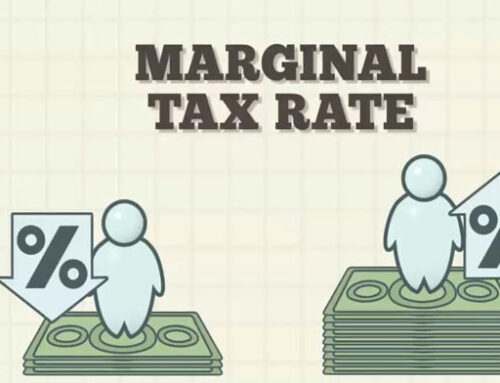How to Determine the Best Interest Rate for an Equipment Lease
The interest rate on an equipment lease is the cost of using the lender’s funds each time you need financing. Your lease rate, or interest rate, is the amount you will pay. To find the best interest rate for equipment lease, you need to consider several factors, such as your credit score, the amount you intend to borrow, and whether you are leasing new or used equipment, as they will all affect the rate you receive. Additionally, for leases below $100,000, the typical rates for satisfactory credit range from 7% to 9%. Rates ranging from 9% to 13% are common for less aggressive lessors or if you have credit issues.
Tax Filing in Chatham >>

Will my rate change over time during the lease?
Your equipment leasing rate is not affected by fluctuating market conditions or index rates. This is a significant advantage over variable loans since it allows you to budget for a consistent monthly payment throughout the entire lease term. Variable rate financing, such as certain loans and mortgages, may offer a lower interest rate when the index rate is low; however, the rate and your monthly payments are likely to increase over the course of the loan.
Also read: Top 5 Tips for Staying Ahead of Tax Season
Why Choose Equipment Leasing?
Tax Benefits
One major advantage of equipment leasing is the tax benefits it provides. Most leasing programs enable business owners to deduct the entire lease payment, not just the interest, as a business expense. This means that when filing your annual taxes, you can deduct the monthly lease payments from the total amount you spent on the equipment.
Easy Application Process
Depending on the size and cost of the equipment as well as the credit standing of your business, it can be quite quick and simple to acquire equipment for around $200,000. Small-ticket items often have a 24 to 48-hour application period.
The process of acquiring equipment for around $200,000 can be surprisingly streamlined, depending on the size, cost, and financial health of your business. For smaller-ticket items, approval can often be secured within a 24- to 48-hour timeframe.
Tax Deductions for Leased Equipment in Canada
In Canada, there are two ways to claim a lease deduction. The first is through sales tax. When purchasing equipment lease, all applicable sales taxes must be paid, whether funded through a bank or paid in cash. This purchase entitles you to receive a significant amount of Input Tax Credit (ITC) from the company during that tax year as equipment lease. However, this benefit is typically lost when sales tax is included in the loan amount.
Alternatively, when leasing equipment, you pay a small monthly lease fee instead of prepaying sales tax. This entitles you to an ITC for the VAT component of the lease as long as you maintain the lease. If you upgrade or trade in your equipment lease before the lease expires, you may pay fewer taxes overall because you only pay taxes for the time you use the equipment lease.
The other way to claim a leasing tax deduction is by deducting the amount monthly. If you borrow money from a bank to acquire equipment, you can deduct the interest component of your loan payment. If the equipment lease is leased, the Canada Revenue Agency (CRA) permits you to claim a full year’s worth of lease payments on your year-end tax records.
The CRA views bank loans as capital costs and leases as operating expenses. Therefore, when leasing equipment as an operating expense, you can write off the entire lease cost, but only the interest on a bank loan. The percentage of your payment that goes toward the principal is not considered.
Also Read: Paying Airbnb Host Taxes in Canada: Processing in 2024

In conclusion,
This blog has covered several important points. Firstly, purchasing equipment for up to $200,000 can be a straightforward process depending on the size of the equipment lease. Additionally, lease rates typically range from 9% to 13% for less aggressive lessors or those with credit issues. Secondly, most leasing programs allow for the entire lease payment to be deducted as a business expense, not just the interest. Finally, in Canada, leasing equipment allows for a small monthly lease fee instead of prepaying sales tax, which can be a significant benefit.
This blog has highlighted several key advantages of leasing equipment for businesses in Canada:
-
Straightforward Process: Leasing equipment for up to $200,000 can be a relatively simple process, depending on the size of the lease. This eliminates the need for a large upfront payment, making it an attractive option for businesses with limited capital or those seeking flexibility.
-
Competitive Lease Rates: Lease rates typically range from 9% to 13% for less aggressive lessors or those with credit issues. This means businesses can access equipment without being burdened by excessively high financing costs.
-
Full Lease Payment Deductible: Most leasing programs allow businesses to deduct the entire lease payment as a business expense, not just the interest. This significantly reduces the tax burden associated with owning equipment.
-
Small Monthly Lease Fee Instead of Prepaid Sales Tax: In Canada, leasing equipment lease offers the benefit of a small monthly lease fee instead of prepaying sales tax upfront. This can be a significant savings for businesses, especially those with tight cash flow.
Overall, leasing equipment presents a compelling option for businesses seeking flexible, affordable, and tax-efficient financing solutions.
Recent Posts
FAQ
Does the equipment lease rate change over time?
No, the equipment leasing rate remains constant throughout the lease term and is not affected by market conditions or index rates. This allows for predictable monthly payments and is advantageous compared to variable rate financing options.



